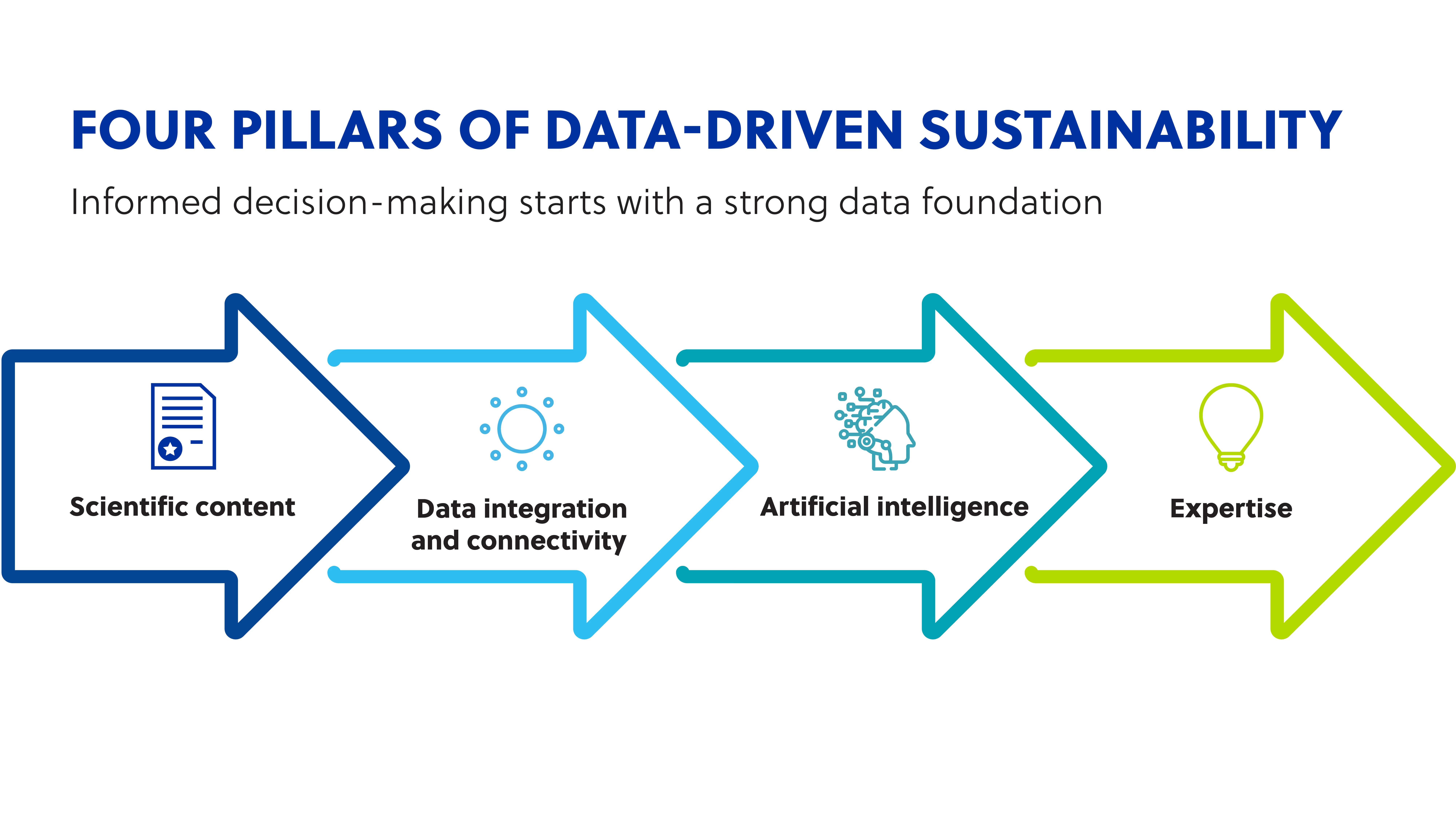Chemical and materials R&D leaders face a growing set of challenges. Regulatory requirements continue to evolve, supply chains remain fragile, and expectations for safer, more sustainable products are increasing. These pressures are reshaping how organizations plan, source, and innovate.
To respond effectively, teams need a clear understanding of the materials and processes that underpin product development. Many organizations already hold this information—data on substances, suppliers, performance, and compliance—but it often sits in separate systems or incompatible formats. When this data is disconnected, it becomes difficult to trace impacts, assess risks, or coordinate decisions across functions.
In this article, we explore how connected scientific data strengthens sustainability efforts across R&D, helping organizations make informed decisions that align innovation with long-term environmental and business goals.
The cost of disconnected data
For most organizations, the information needed to make R&D more sustainable is already available but fragmented. Substance data, supplier details, performance results, and regulatory information are often managed by different teams and systems. Without shared structure or common identifiers, these datasets remain disconnected, limiting visibility into how materials flow through research, production, and supply chains.
This fragmentation makes it difficult to set meaningful sustainability targets or measure progress. Teams may know what they want to achieve but lack the data integration needed to determine where to focus efforts or how to quantify results. Establishing those connections between scientific, regulatory, and operational information creates the clarity required to identify risks, prioritize opportunities, and guide innovation toward measurable sustainability outcomes.
Building the foundation for data-driven sustainability
Although the need for connected data is clear, how to get there is less so. Turning scattered information into a single, reliable source requires structure, quality data, and expertise. Think about this like four interconnected pillars that together form the foundation for data-driven sustainability. Each pillar builds on the next, creating the conditions for reliable insight and measurable progress.

1. Scientific content
A sustainable innovation strategy begins with reliable scientific data. Comprehensive, curated information on substances, materials, properties, safety, and regulatory status provides the foundation for evaluating options, assessing risks, and identifying opportunities for improvement.
2. Discovery and connectivity
With comprehensive data in place, the next step is to connect it. Linking internal research data with external regulatory and supplier information—using standardized identifiers and ontologies—creates complete profiles for materials and processes. These connections reveal relationships that would otherwise remain hidden, giving teams a consistent view across R&D, manufacturing, and the supply chain.
3. Artificial intelligence and analytics
AI amplifies what connected data makes possible. Once information is structured and linked, advanced analytics can identify patterns, surface relationships, and model outcomes at scale. In sustainability contexts, this might mean highlighting high-impact substitutions, predicting supply-chain risks, or quantifying environmental trade-offs. Without comprehensive, connected data, AI can only process fragments; with it, the technology becomes a catalyst for faster, more confident innovation.
4. Human expertise and governance
Data and technology achieve the greatest impact when guided by scientific expertise. Expert oversight ensures that information is accurate, ethically managed, and responsibly applied. This human element turns data-driven insights into sound strategies for sustainable innovation.
Data-driven sustainability in action
Once the four pillars of data-driven sustainability are in place, organizations can move from reacting to new regulations or supply disruptions to proactively planning them. Integrating scientific, regulatory, and supply-chain information reveals relationships that were previously hidden, helping teams identify risks, reduce inefficiencies, and uncover opportunities for sustainable innovation, shown by the two application examples below:
1. Mapping chemical supply chain transparency
Understanding how materials move through production is key for identifying environmental impact and operational risk. Connected data allows organizations to trace relationships from raw materials and intermediates to finished products, revealing dependencies, sourcing patterns, and potential bottlenecks.
This visibility supports sustainability initiatives and business continuity by showing where supply constraints, regulatory exposure, or chemicals of concern may be present and where innovation could deliver greater efficiency or resilience.
2. Replacing chemicals of concern with alternatives
Replacing regulated or high-concern substances begins with understanding how a material is used and what function it provides. Alternatives analyses allow teams to search for and compare potential substitutes by structure, function, and properties. Using advanced analytics, these relationships can be explored at scale to identify candidates with similar performance characteristics. Applying additional filters, such as regulatory status, sourcing considerations, or safety classifications, helps narrow large sets of possibilities to those most likely to meet technical and sustainability requirements.
As a result, fewer candidates require testing, enabling laboratories to focus on the most viable options, accelerating progress toward more sustainable formulations.
Both of these applications demonstrate how data-driven sustainability can be applied to an R&D workflow to drive innovation while reducing risk across the entire value chain.
Embedding data-driven sustainability into your innovation strategy
Data-driven sustainability strengthens how innovation decisions are made. When scientific, operational, and business teams work from the same reliable information, sustainability becomes part of everyday planning and execution. This shared foundation encourages:
- The integration of sustainability considerations into early-stage R&D.
- Alignment of innovation, compliance, and operational goals across functions.
- Predictive insights to anticipate change.
- Greater resilience through stronger links between science and business strategy.
- Long-term value creation through responsible innovation.
As expectations for safer, more sustainable products grow, organizations that embed sustainability into research and decision-making will be best equipped to adapt and thrive. This approach supports continuous improvement across R&D and supply chains while maintaining the focus on environmental progress and business performance.
Deepen your understanding of data-driven sustainability in our on-demand webinar.


